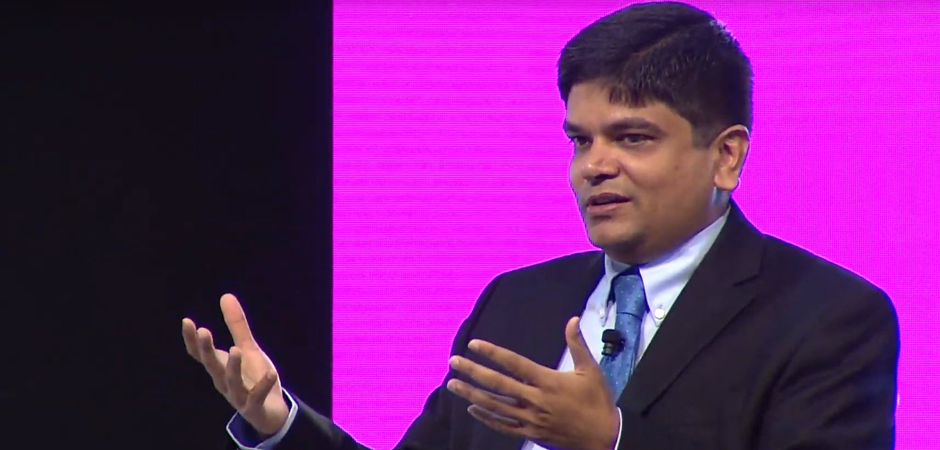Federated learning: How the world's biggest federation is training state-of-the-art brain tumor segmentation models

Prashant Shah, director of Artificial Intelligence for Health and Life Sciences at Intel, describes federated learning as a technique that allows collaborative, de-centralized training of AI models across private datasets instead of training models in a central data center. “The idea is to allow devices to train models locally on their own data while keeping the data on the device,” says Shah. “Periodically, the learnings of the models from the sites are combined to create a global model. In our experience, more institutions participate in a federation because they don’t need to move their data outside their institutional firewalls. This enables the training of models on a much larger and more diverse dataset, which is crucial in building accurate and generalizable models. Federated learning has seen increased popularity in privacy-sensitive industries like health and life sciences and the financial sector, where regulatory laws make it difficult to move private data around.”
At SPIE Medical Imaging 2023, Shah will highlight key considerations in federated learning and discuss the results of the largest international federation of healthcare institutions that developed a state-of-the-art brain tumor boundary detection model using MRI scans from 71 institutions across six continents.
What are some of your responsibilities as the Head of Artificial Intelligence for Health and Life Sciences at Intel?
AI in health and life sciences (HLS) is advancing rapidly and is already having a profound impact on our lives. At the heart of AI are computing, algorithms, and data. Intel-based computers power the cloud, high-performance systems, and IoT edge. In my role at Intel, I engage with Intel’s partners and customers on various AI use cases — from medical imaging, robotics, drug discovery, smart surgeries, genomics, digital pathology, electronic health records, and other emerging use cases. My team helps our partners apply Intel AI software and hardware to solve their use cases, whether it’s incorporating AI in portable medical devices, or performing large scale genomics in the cloud. We also act as a sensing mechanism for Intel. Typically, HLS use cases tend to push the boundaries of computing, and the industry might not have the innovation today to tackle these emerging use cases. We take those insights to improve our product roadmaps and technologies and undertake strategic R&D projects. Federated learning, for example, started as an R&D project that has turned into a powerful technology to help our industry train and validate AI models across various private data silos.
What are some of the projects you’re working on that you’re most excited about?
I’m excited about our work and collaboration with the University of Pennsylvania on federated learning. Our collaboration started as an R&D project in 2018. Today it has blossomed to become the world’s largest federation for training a brain tumor segmentation model. This federation now spans 71 sites across six continents. This first-of-its-kind federation demonstrates an architecture that allows models to be trained on datasets from around the world, improving accuracy and mitigating bias. AI models are notorious for being accurate in some regions or settings but, suffer from poor accuracy in others. One of our significant findings was that the models trained using federated learning also generalize better, making them deployable in a wide variety of settings.
What led to your interest in AI?
For most of my career, I have been at the intersection of computing and healthcare. I spent a good decade on healthcare data interoperability in the 2000s as digitization of electronic health records, electronic prescriptions, and digital imaging was taking off. My focus was building systems that enable semantic information to be shared between systems and between patients, providers, and other stakeholders. As data systems got connected and data started to flow, we had the problem of having too much data but not many actionable insights. I pivoted my career to focus on applying machine learning to create predictive models from the data. With advances in computing and algorithms, deep learning emerged as a powerful technique to improve the accuracy of models with added volume and variety of data, replacing many traditional computer-vision and machine-learning models. In 2016, I established Intel's center of excellence on AI in health and life sciences, starting with medical imaging. After our initial success, we expanded into pathology, genomics, drug discovery, and medical IoT. In the next decade, AI will deliver its true potential, and I love being part of the transformation.
What do you want attendees to learn from your talk?
My talk will introduce the topic of federated learning based on our work with the University of Pennsylvania to set up the world’s largest federation to train brain tumor segmentation models. The attendees will understand how federated learning works, the problems it solves, the new challenges it introduces, and how they can use this technique to further their research.
| Enjoy this article? Get similar news in your inbox |
|



